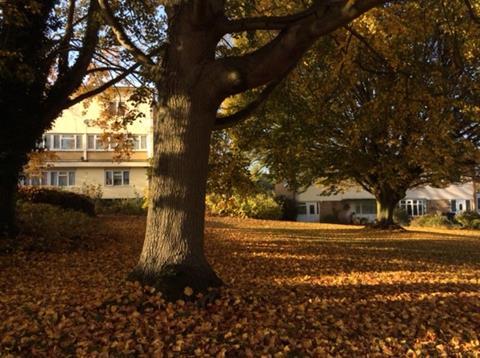New Towns were places were the professions worked in harmony and where housing was built that would shame today’s volume housebuilders. It’s time to look afresh, argues Gillian Darley

There is something heroic about the recent history of the first-generation New Towns, struggling along in the shadows, their post-war aspirations lost in the long grass, their social housing battered but not beaten despite often minimal maintenance regimes.
They stand as reminders of a world in which planners, architects and landscape architects walked in step. Sometimes the professions combined in one person. Peter Shepheard, Geoffrey Jellicoe and Frederick Gibberd were all able in several disciplines and where needed turned to someone who could complement their skills. Gibberd worked for many years with Sylvia Crowe, the landscape architect for Harlow. Through her eyes, and her appraisal of the topography and characteristics of the site, came much of the real quality of that plan. In Basildon she worked less happily with those in charge, who were in her view less aware of the landscape potential of the site, even with the heavy (“three horse”) clays and poor farmland that had contributed to agricultural failure and thus to the plotlands, compulsorily purchased for the New Town after the war.
Any architect with even an ounce of social responsibility, or an iota of curiosity, should pay a visit to their nearest New Town
It has proved surprisingly easy, and convenient, for the rest of us to take the bypass around the back of the unexceptional mid-1950s terraces, or look out of the other window when hurtling through on the train. Even the undeniable achievements of Milton Keynes – a mere 50 years old – serve only to exaggerate the indifference with which Harlow (1947) and Basildon (1949) have been met over the years.
Yet with the study of post-war planning and the growing reach of 20th-century listing, a new generation (or two) is looking hard at the achievements of the New Town programme.
And there are old chestnuts to be dealt with. New Town planning did not entirely turn from higher densities or even high-rise solutions. Brooke House in Basildon town centre is a handsome residential tower and Harlow has the Lawn crowning the core of the plan; the Lawn, the first residential tower block in the country.
But the many low-rise ingenious housing solutions that dot the New Towns deserve examination. In a world of proliferating estates of off-plan retro-styled detached and semi-detached houses, they shame the volume house builders. Any architect with even an ounce of social responsibility, or an iota of curiosity, should pay a visit to their nearest New Town. Nor is it enough to park the car (often, as Radburn layouts dictate, at a distance) near illustrious architects’ work. It is well worth plodding around for a day to get the feel for the rough and the smooth of it all.

In some respects, the urgently needed, speedily constructed 1950s New Towns were a rehearsal for a play that was never staged. The Treasury which dug deep to finance them and the work, to provide urgently needed housing and employment, drew on pre-war ideas and standards (including exasperating bureaucratic procedures). In fact the incremental stages of Basildon and Harlow show the considerable strengths that came from upgrading the model, in the 1970s particularly, with the benefit of hindsight and the relative sophistication of high-density urban patterns to draw on. Yet, even as they began to solve some of the early difficulties and as the towns gelled, social housing was under threat and eyes were turning elsewhere, looking at the cities and the management of old fabric and new pressures; in particular vehicular.
For decades no one looked in that direction. It is time we did.

















4 Readers' comments